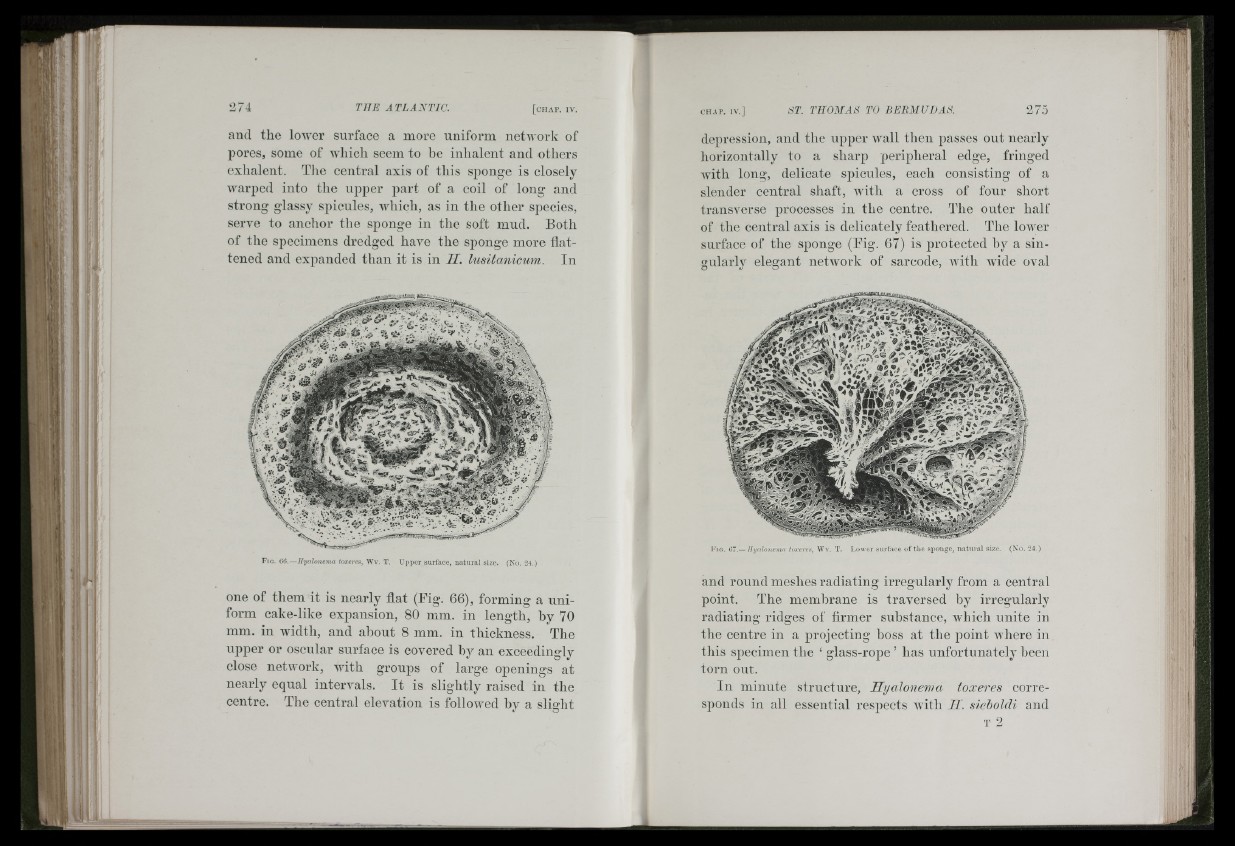
i >
'1*^
.li;
and the loAA'er surface a more uniform network of
pores, some of Avhich seem to be inhalent and others
exhalent. Tlie central axis of this sponge is closely
warped into the upper part of a coil of long and
strong glassy spicules, Avhich, as in the other species,
serve to anchor the sponge in the soft mud. Both
of the specimens dredged have the sponge more flattened
and expanded than it is in II. lusitanicum. In
'ffi-" .G. tff: -ff. .'^'vVG
' 4 k , .........................
F ig . 66.— Hyalonema toxeres, Wy, T. U p p e r su rface, n a tu i'a l size, (No. 24.)
one of them it is nearly flat (Eig. 66), forming a uniform
cake-like expansion, 80 mm. in length, by 70
mm. in width, and ahout 8 mm. in thickness. The
upper or oscular surface is covered hy an exceedingly
close network, with groups of large openings at
nearly equal intervals. It is slightly raised in the
centre. The central elevation is followed by a slig-ht t, O
depression, and the upper Avail then passes out nearly
horizontally to a sharp peripheral edge, fringed
Avith long, delicate spicules, each consisting of a
slender central shaft, Avith a cross of four short
transverse processes in the centre. The outer half
of the central axis is delicately feathered. The loAver
surface of the sponge (Eig. 67) is protected by a singularly
elegant network of sarcode, Avith wide oval
F ig. 67.— Hyalonema taxeres, Wy. T. L ow e r su rfa e e o f tlie sp o n g e , n a tu r a l size. (No. 24.)
and round meshes radiating irregularly from a central
point. The memhrane is traversed by irregularly
radiating ridges of firmer substance, which unite in
the centre in a projecting boss at the point Avhere in
this specimen the ‘ glass-rope ’ has unfortunately been
torn out.
In minute structure, Hyalonema ioxeres corresponds
in all essential respects Avith II. sieboldi and
T 2
I I n
"A- "
iji
■llij (
ilB'
Sfi'h
'IH«.;i»-,
■